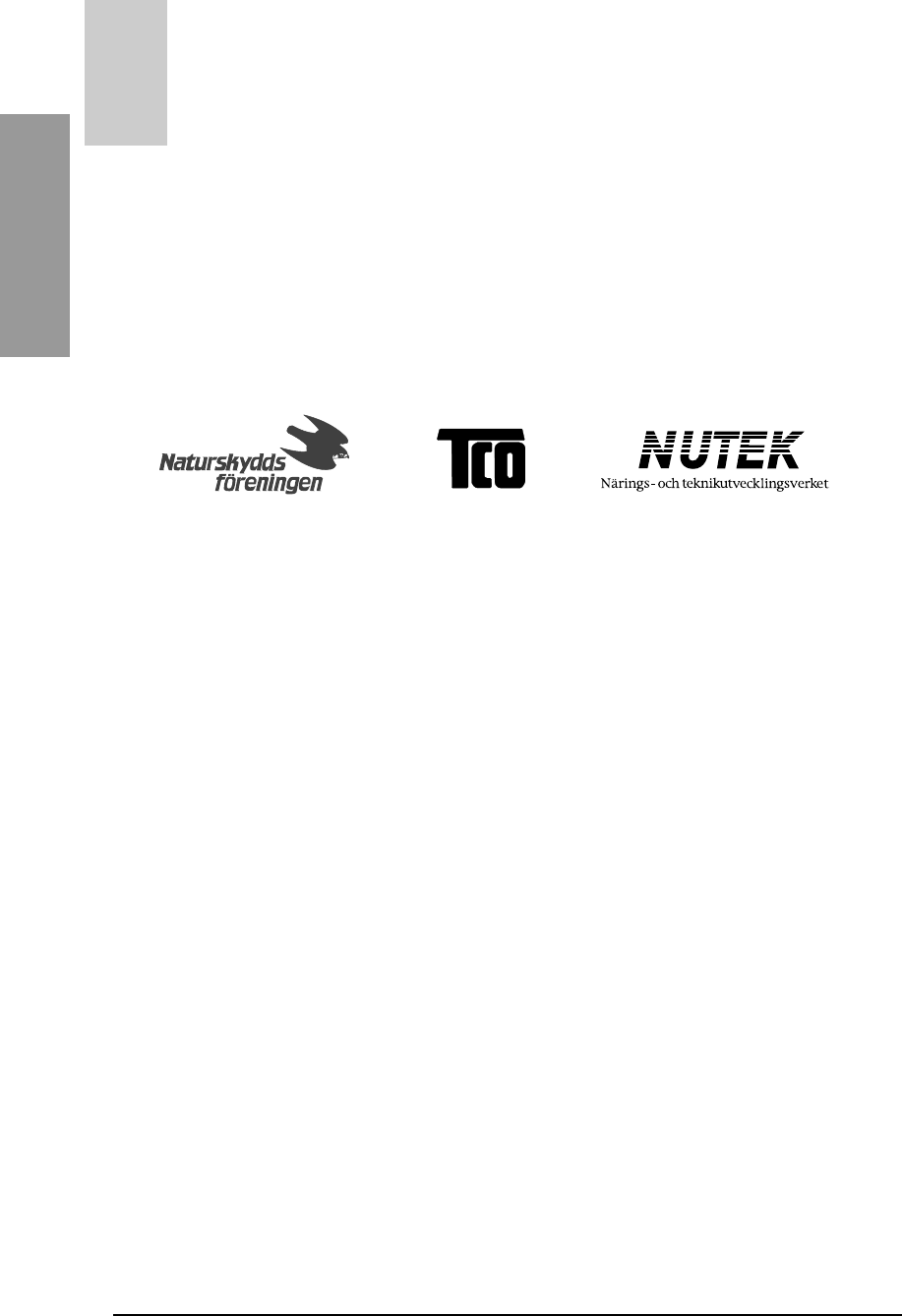
- 1-4 -
ENGLISH
In and after the middle of this page, you will find a brief summary of the environmental requirements
met by this product. The complete environmental criteria document may be ordered from:
TCO Development Unit
S-114 94 Stockholm
Sweden
Fax: +46 8 782 92 07
E-mail (Internet): development @tco.se
Current information regarding TCO’95 approved and labelled products may also be obtained via the
Internet, using the address:
http//www.tco-info.com/
TCO’95 is a co-operative project between
Environmental Requirements
Brominated flame retardants are present in printed circuit boards, cabling, casings and housings,
and are added to delay the spread of fire. Up to 30% of the plastic in a computer casing can consist
of flame-retardant substances. These are related to another group of environmental toxins, PCB,
and are suspected of giving rise to similar harm, including reproductive damage in fish-eating birds
and mammals. Flame retardants have been found in human blood and researchers fear that they
can disturb foetus development.
Bio-accumulative* TCO’95 demands require that plastic components weighing more than 25
grammes must not contain frame retardants with organically bound chlorine or bromine.
Lead
can be found is picture tubes, display screen, solder and capacitors. Lead damages the nervous
system and in higher doses, causes lead poisoning.
The relevant bio-accumulative* TCO’95 requirement permits the inclusion of lead, as no replacement
has yet been developed.
Cadmium
is present in rechargeable batteries and in the colour-generating layers of certain computer displays.
Cadmium damages the nervous system and is toxic in high doses.
The relevant bio-accumulative *TCO’95 requirement states that batteries may not contain more than
25 ppm (parts per million) of cadmium. The colour-generating layers of display screens must not
contain any cadmium.
Mercury
Is sometimes found in batteries, relays and switches. Mercury damages the nervous system and is
toxic in high doses. The relevant bio-accumulative*TCO’95 requirement states that batteries may no
contain more than 25 ppm (part per million) of mercury.
demands require that no mercury is present in any of the electrical or electronic components
concerned with the display unit.
CFCs (freons) are sometimes used for washing printed circuit boards and in the manufacture of
expanded foam for packaging. CFCs break down ozone and thereby damage the ozone layer in the
stratosphere, causing increased reception on Earth of ultra-violet light with consequent increased
risks of skin cancer (malignant melanoma).
The relevant TCO’95 requirement: Neither CFCs nor HCFCs may be used during manufacture of
the product or its packaging.
Bio-accumulative is defined as substances which accumulate within living organisms.


















